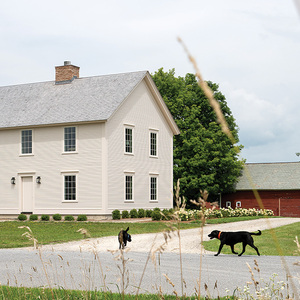We are under reconstruction (gut renovation) and I have recently discovered that the circuit breakers in the panel are not the three position breakers that I am accustomed to. In other words, when the breaker trips it doesnt go to the middle, it flips to the off position. I asked the electrician about these and he assures me that they perform the same as the three position breakers.
There were no specs for the electrician so he used his best judgement when selecting materials. I have looked for info on the web and havent found an article that discusses breakers in any depth. I would like to understand how these difer from the ones I am familiar with and what are the tradeoffs, if any. If I am going to make a change, now would be the time to do it.
Parkinson’s Law: ‘Work expands so as to fill the time available for its completion.’



















Replies
What is the brand and series of breakers.
There might be something in the UL specs that cover this, but I don't know.
But one feature that it must have it that the handle must "trip free". That means that you can't hold the handle in the on position and keep it from tripping.
That is probably why most of them go to an intermediate position.
But if a manufacture has a trip free design that goes clearly to the off position then that is a good thing as it give positive indication of a trip.
With some other designs it is not uncommon for a breaker to trip and people not seeing it clearly all the way over don't realized that it has tripped.
Thanks Bill. This is one of those blind items that you never really think about. I dont know for sure what the "right" answer is or understand the implications of the choice. I like our electrician who says that these are fine. In the back of my head I cant help but think that some part of that answer is based in the fact that the panel is about 75% complete. I feel like some part of the selection process behind chosing these was cost. There is no name on the breakers but the main, a 200 AMP breaker, is made by Cutler-Hammer. Parkinson's Law: 'Work expands so as to fill the time available for its completion.'
The Cuttler Hammer breakers I am fimiliar with are commercial/industrial bolt in breakers, but the newer ones do trip to the off position. They also show a red indicator when in the tripped position vs. a normal black in the manual off. This may be different in the snap in residential lines.
I think I would go with what the electrician says and tape his business card to the inside of the panel box door.
Dave
Dave - As much as I like the idea of taping the electricians card inside the door, its only meaningful if the inspector gets out of his truck to visit the panel.
The only circit breaker that is Cutler-Hammer is the main, which does trip to the middle position. The rest of the breakers have no writing on them save for the amperage which is on the end of the switch (I think.)
I guess if I could refine my question it would boil down to this. When there are breakers out there that I (and many others are familiar with) which trip to the middle position, why would someone elect to use a breaker that trips to the off position? Is it worth the money to switch them out to the breaker that trips to the middle? Is it a waste of time to even be concerned with this level of detail when renovating a house?
This is one of those situations where nothing was spec'd, no one asked what we wanted, but made a decision for us. I just want to make sure that decision is the same one I would have made.
Thanks everyone.Parkinson's Law: 'Work expands so as to fill the time available for its completion.'
Look on the label on the panel.It will list the breakers (brands, series, ratings) that the panel manufacture has approved to be used in that panel. If a different brand is used then the manufactures warantee is void.However, it can still be code legal if the breaker manufacture has tested an approved the use of those breakers in that brand of panel.I would pull one of the breakers and check the name/model number and look for the UL approval.If they are listed on the panel that is first place to ask the electrican some pointed questions.If they are not not UL listed for use in that panel then the installation is improper."I guess if I could refine my question it would boil down to this. When there are breakers out there that I (and many others are familiar with) which trip to the middle position, why would someone elect to use a breaker that trips to the off position?"As I said many people would think that is a good feature. Many of them trip to a "neutral" postion which is very close to the ON position. And you really can tell until you move the handle.A clear indication of OFF is a benifit in my mind.
As I said many people would think that is a good feature. Many of them trip to a "neutral" postion which is very close to the ON position. And you really can tell until you move the handle.
That is exactly what I was thinking. Whenever I had a breaker trip, I had to physically touch each one to determine which one was tripped. I personally would like to visually tell the difference.
Semper Fi
My concern with something that trips to "Off" is that there may breakers in the panel that are in the Off position for a reason. Tripping to a middle position clearly identifies a breaker that has been tripped.Parkinson's Law: 'Work expands so as to fill the time available for its completion.'
If breakers are off on purpose then then should be tagged out.Now on a residential panel most people don't get the lockout devices for the panel.But they can be flagged using tape.http://www.taunton.com/finehomebuilding/pages/hvt048.asp
Try deliberately tripping a breaker, and compare it with one manually turned off. Gently feel the handles, and see if the tripped one has a more "loose" touch to it.
-- J.S.
Can you give me a little insight into what I might learn from your proposed experiment?Parkinson's Law: 'Work expands so as to fill the time available for its completion.'
It shows you how to tell the difference between tripped by an overload and deliberately shut off at the panel. Those plus "on" are the three possible conditions of a breaker. The original question was about breakers that move the handle part way to distinguish between tripped and turned off.
-- J.S.